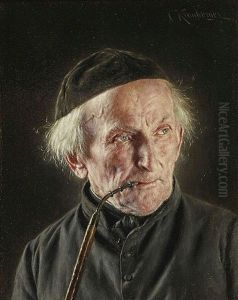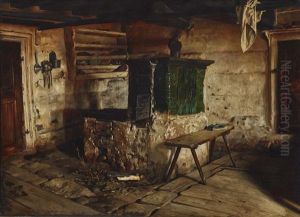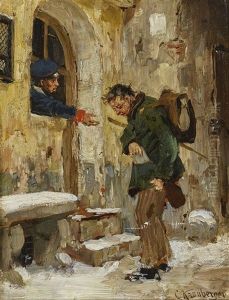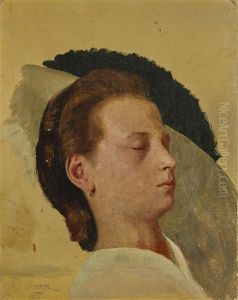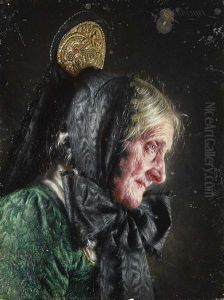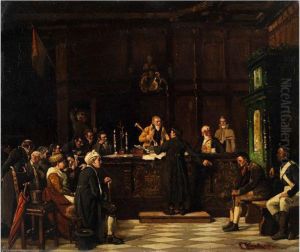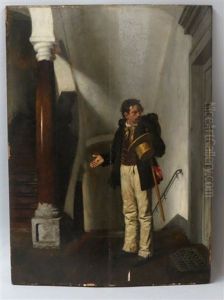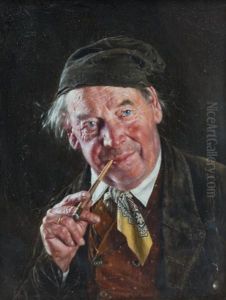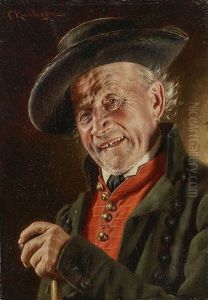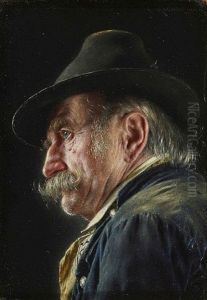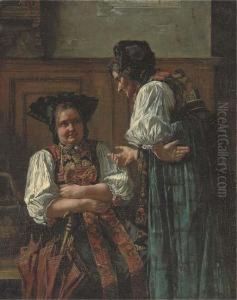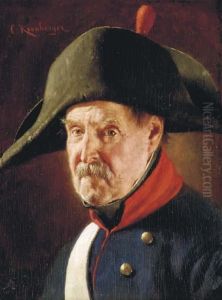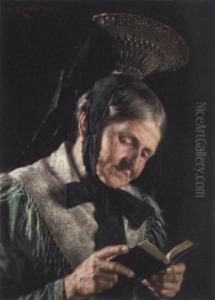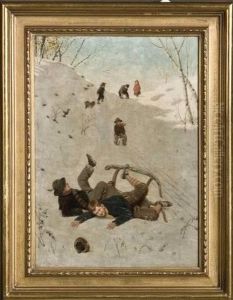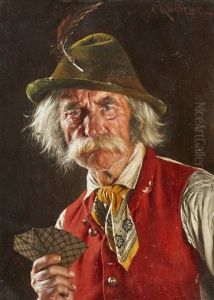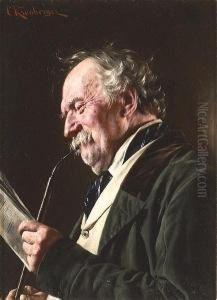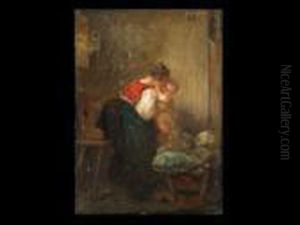Carl Kronberger Paintings
Carl Kronberger was an Austrian genre painter born on March 14, 1841, in Freistadt, Upper Austria. He developed an early interest in art, which led him to pursue his studies at the Academy of Fine Arts in Vienna under the guidance of revered artists such as Carl Mayer, Carl Wurzinger, and Ferdinand Georg Waldmüller.
Kronberger's work is characterized by the meticulous depiction of everyday life and people, often capturing moments of simplicity with a touch of romanticism. He was known for his genre paintings which were popular in the 19th century, a style that depicted scenes from daily life with a focus on the lower and middle classes. His ability to infuse warmth and humanity into his work endeared him to many.
Throughout his career, Kronberger remained an active member of the art community, participating in numerous exhibitions. He was also a member of the Vienna Künstlerhaus, an association of artists in Vienna, which played a central role in the art scene of the city during that period. He exhibited his work in various European cities, garnering attention and praise for his detailed and refined style.
Kronberger's paintings are noted for their vibrant color palette and the life-like quality of his figures. His work was appreciated for its narrative quality, often telling a story through the expressions and postures of the subjects he portrayed. He had a talent for capturing the nuances of light and shadow, which added depth and realism to his scenes.
After a long and prolific career, Carl Kronberger died on October 4, 1921, in Vienna. His legacy continues through the works he left behind, many of which are held in private collections and museums. Today, he is remembered as a significant figure in Austrian art history, particularly in the genre painting tradition of the 19th century.



